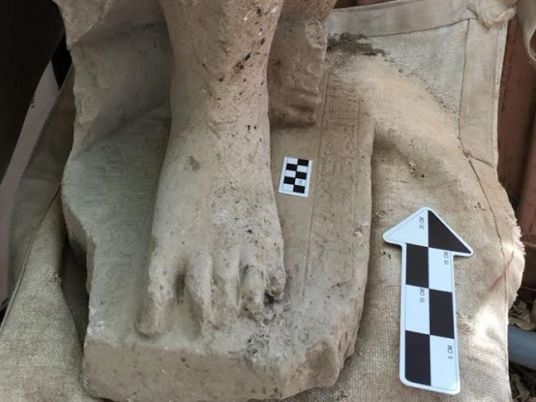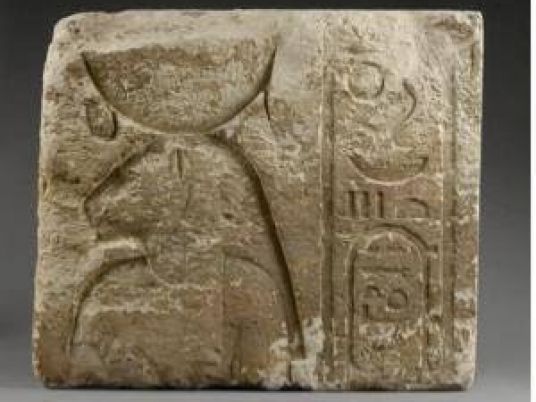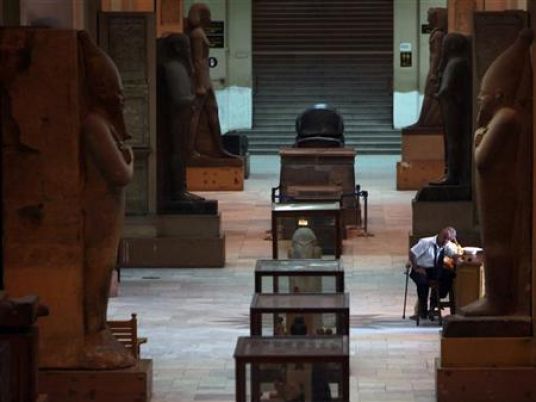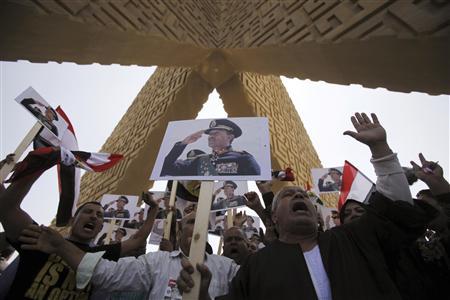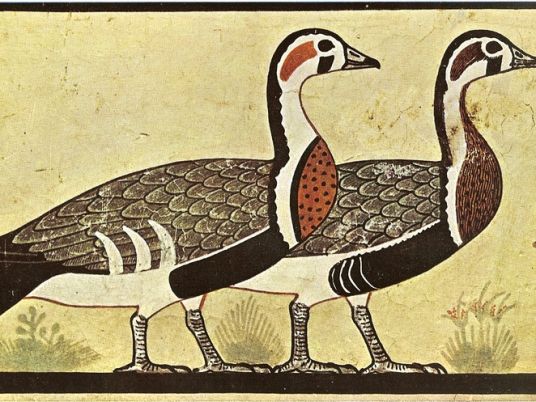
Al-Masry Al-Youm has obtained a copy of the research paper prepared by Francesco Tiradritti, egyptologist and head of the Italian archaeological mission in Luxor, in which he states that the "Meidum Geese" painting, displayed in the Egyptian Museum, known as the Ancient Egyptian "Mona Lisa", is fake.
The painting, 172 cm wide and 27 cm high, is a mural allegedly found in the Nefermaat Mastaba near the Meidum pyramid. It is believed to have been part of the ornaments on the door to Nefermaat’s wife chambers.
Painted in natural colors, it depicts three pairs of geese feeding on grass. According to researchers, the white color was extracted from limestone, the red from iron ore and the green from malakhit.
According to a statement issued by the Egyptian Antiquities Authority in 1886, the painting was discovered by Luigi Vassalli in the tomb of Nefermaat, an ancient Egyptian civil servant, in 1871. Vassalli separated the painting from the wall and brought it to the Bulaq Museum in 1874. It has been famous worldwide ever since.
In his research paper, Tiradritti says the type of geese depicted in the painting is not known in Egypt, adding that the style in which it was painted does not match Ancient Egyptian art, especially the use of shades. He also states that the cracks in the corner cannot be part of a panel that had been separated from a wall. He believes the artwork had been painted over another painting, the traces of which can be seen in the upper right corner.
Tiradritti believes it was Vassalli who painted it, as he was an artist who studied at the Academy of Arts in Milan.
He adds that he is not questioning the artisitic achievements of the civilization of the Pharaohs, he is merely calling for more scrutiny in analyzing ancient paintings.
For his part, Tarek Tawfik, director of the new Grand Egyptian Museum, said the painting's authenticity has never been questioned before. “I have not read Tiradritti’s research paper,” he said. “We should study the evidence thoroughly before we recognize his claim as valid.”
Edited translation from Al-Masry Al-Youm

